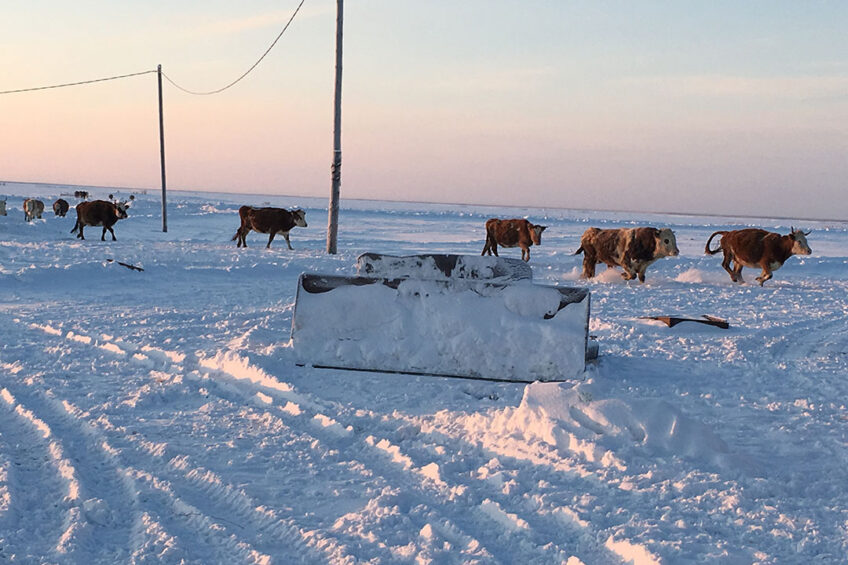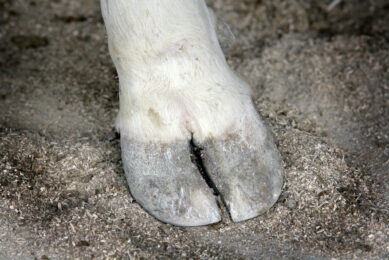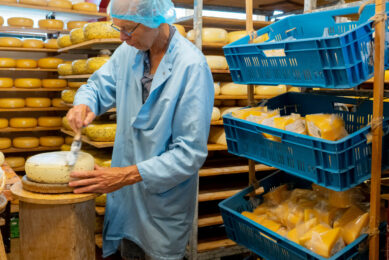Cows on pasture threatened in Russia

The dark path of global warming is a dangerous one with severe consequences, one being that in some pastures in parts of Russia there may be deadly viruses that have been buried for decades, if not centuries, under the permafrost; these viruses could be released because of global warming. This is of concern while the Russian government is rolling out plans to boost the domestic dairy herd and milk production.
A few years ago, Russian farmers encountered a mysterious anthrax outbreak in the Yamal Peninsula – a sparsely populated region in the Arctic Circle. Dozens of people were hospitalised, and one child died. The government had to evacuate some families because one of Russia’s largest reindeer herds, of 2,000 animals, was infected.

A follow-up investigation showed that the outbreak was caused by a reindeer carcass that had been infected with anthrax and buried in the permafrost somewhere in the middle of last century. Global warming turned the frozen soil in Siberia into pastures and exposed the deadly burial site.
There is no surprise that the anthrax spores stayed alive since the bacterium can survive in cold conditions for 2,500 years, the Russian Academy of Science estimated.
Anthrax is a common threat to the Russian milk industry. Outbreaks occur from time to time in different regions, prompting local authorities to embark on mandatory vaccination campaigns of the milk cow population. The last episode was registered in October 2020 in the Republic of Dagestan when 5 people were infected after being in contact with sick cows.
Russia embraces new trends
Russian farmers find themselves in a new reality as over the past few years, the country’s environmental-protecting organisations have become a force to be reckoned with. This is likely to spur demand for new agricultural technologies in the area of sustainability and animal welfare in the coming few years. Find out more…
More land is expected to be set free from snow and ice in Russian Siberia in the coming years. A government report on environmental protection said temperatures in Russia had warmed by 0.42°C per decade since 1976, or 2.5 times quicker than the global warming trend of 0.17°C.
Milk industry set to grow
By 2023, Russia is set to launch new milk farms with a total designed production performance of 1.2 million tonnes of milk per year. The industry is likely to add 5 million tonnes of milk production per year in the long run, the Russian bank Rosselkhozbank estimated. In 2020, the domestic dairy industry became the second most attractive for investments in the Russian livestock industry.

Siberia is likely to account for a significant portion of the upcoming growth. By 2027, the industry is likely to double average productivity to 7 tonnes per cow compared to 3.55 tonnes in 2017 thanks to investments of Rub50 billion ($ 800 million) per year, the Russian union of dairy producers Soyuzmoloko forecast. The growth of milk production is expected to be around 2–3% per year.
Strategically, with its vast northern territories Russia could take advantage of global climate change,” comments Artem Belov, chairman of Soyuzmoloko, adding that this is unlikely to change the entire dairy industry’s landscape in the coming several years.
Global warming offers some benefits to the Russian milk industry. The rising temperatures could let animals feed on pastures in the southern regions year-round. In that case, in terms of productivity, Russian companies could catch up with the countries with better climate, like the US, Brazil, Argentina, Paraguay, India and others, says Andrey Dalnov, head of industry expertise department at Rosselkhozbank.
“In the future – and here we are talking about several decades – the location of livestock complexes may gradually shift to the north, not only due to warming but also because of a shift northward to the borders with regions with effective cultivation of grains and oilseeds – wheat, barley, corn, sunflower, and soybean,” Dalnov said. A growing number of milk farms are being built in the Russian northern regions. For example, the government of the Republic of Sakha said in 2020 that 11 new livestock farms were slated to be built in the region in the next several years.
Russia’s strategy to tackle mastitis and antibiotics
Russia is looking for new ways to deal with mastitis as the country is increasingly looking to curb veterinarians’ use of antibiotics. It is also looking into designing novel types of bacteriophages. Read more…
Ancient viruses
As explained by Mikhail Yulkin, chairman of the Russian Union of Industrialists and Entrepreneurs’ ecological commission, by expanding pastures to the regions previously caught in permafrost, Russian milk farmers could risk encountering a lot of surprising stuff.
The Arctic is a giant refrigerator containing a lot of different things. As it melts, different biota come back to life, including viruses. So, there are clearly risks that these territories indeed would become a source of new, or actually old, diseases, some of which do not exist in the modern world,” Yulkin said, adding that in this regard, any expansion of agricultural operations to these lands must be carried out with great precautions.
The scientists warn that anthrax might not be the worst thing to find in the Arctic. In 2014 an ancient virus called Pithovirus sibericum was found in the Siberian permafrost and came back to life after it thawed. The virus had been in the ground for over 30,000 years but luckily did not pose a threat to humans or animals. Scientists are concerned that some of the viruses yet to be found might be entirely new to humanity.
“One of the consequences of climate change is the increase in such outbreaks of infectious diseases. The corpses of animals that died in epidemics tens and hundreds of years ago are preserved as old cemeteries in the permafrost,” said Vladimir Chuprov, head of the energy department of Greenpeace.
Russian dairy consumption set to rise
The Russian population’s dairy consumption is set to rise to 36 million tonnes by 2025, or 245.5 litres per capita, 2% up compared to 2020, the state-owned agricultural bank Rosselhozbank forecasted. Check it out…
According to Yulkin, some scientists even believe that these territories should be left alone for the time being. Some approaches have been proposed in Russia during the past few years aimed at preserving permafrost for as long as possible, but if global warming continues at the current pace, they are unlikely to work.
With this backdrop, Russian environmentalists believe that milk farmers opening new production sites in the warming parts of the Arctic must consider the increased biosecurity risks, and direct more attention to hygiene and vaccination.
Join 13,000+ subscribers
Subscribe to our newsletter to stay updated about all the need-to-know content in the dairy sector, two times a week.










